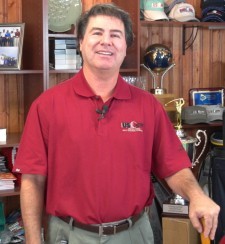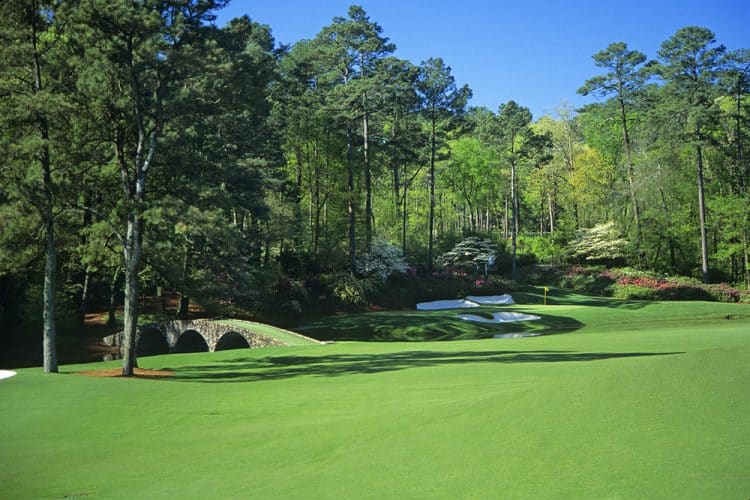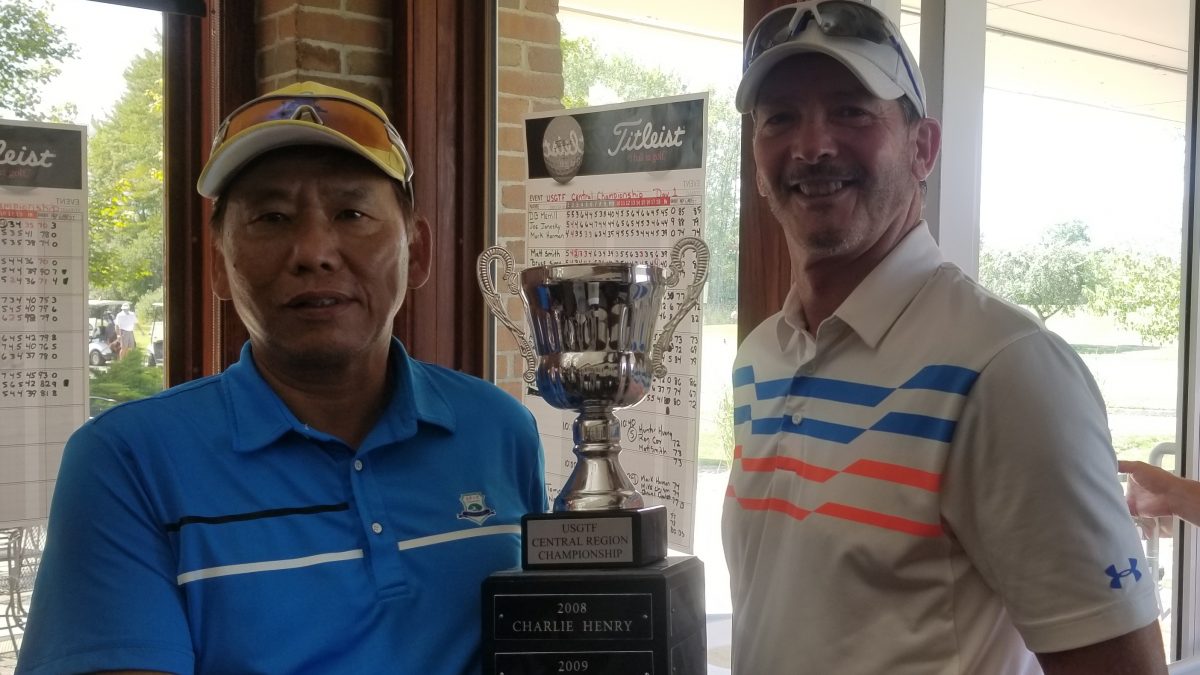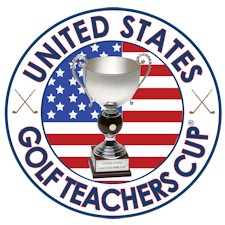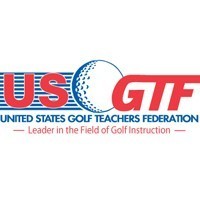Blog
The Rhythm of Golf
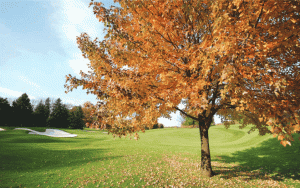 Rhythm is an often overlooked aspect to the golf swing. Since the invention of the camcorder, teachers have been enamored with positions in the swing. They want their students to be in certain positions at certain times, all in an effort to get the ball to finish somewhere near its intended target. But today, savvy teachers know that there is more to the swing than just positions. They realize that the overall movement is important, and that good rhythm is very much a part of that.
Rhythm is an often overlooked aspect to the golf swing. Since the invention of the camcorder, teachers have been enamored with positions in the swing. They want their students to be in certain positions at certain times, all in an effort to get the ball to finish somewhere near its intended target. But today, savvy teachers know that there is more to the swing than just positions. They realize that the overall movement is important, and that good rhythm is very much a part of that.
It’s not just the golf swing where rhythm is important. There is a certain rhythm playing the game that is completely different than practice. There are also certain rhythms playing the game present one day that are different than other days. Indeed, an individual round of golf might feature several rhythms.
In playing vs. practice, it is important that our students somewhat simulate the rhythm of playing as much as they can when they practice. This might include hitting one shot with one club, putting the club back into the bag, drawing out another and playing another shot. To better simulate the rhythm of the course, going through the same pre-shot routine used on the course is of paramount importance. It doesn’t have to be used for every shot, but it should be used often enough so that when the player gets on the course, it doesn’t feel like such a foreign experience in terms of rhythm.
The rhythm of a round might be dramatically changed, too. For example, a group of golfers may be sailing along without delay until they run into a logjam of players up ahead, drastically slowing their progress. This can lead to a change in play, often for the worse. However, it can be no less damaging to be playing slowly when the group ahead suddenly decides it’s time to let your group through. Players often rush their routines in an effort to be courteous to the yielding group, but most of the time they’re only saving a couple of seconds. Although, those couple of seconds seem like the routine is cut in half, and the result is usually a poor one. And playing out the round with the newfound “freedom” of not having to wait can mean taking several holes to once again find a comfortable rhythm.
Teaching has its own rhythm, as well. There are days when things seem to flow and our students are progressing well. Other days, it seems we just cannot find the rhythm of our teaching, and we struggle with our message, our presentation, our quality of instruction. Perhaps it’s best to slow down when we find ourselves in this position and take some time to simplify our approach. You might think this malady would affect only new teachers, as they are still trying to find their footing, but experienced teachers have their off days, too.
Those of us who run a golf course or who work in the pro shop will find that a workday will often have several rhythms, and very rarely will there be a consistent rhythm throughout the day. There might be an early-morning rush, followed by a lull, followed by a consistent flow of players after lunch, tailing off again until the after-work crowd appears. There might be unexpected problems cropping up which divert our attention.
Think about all the aspects of golf besides playing, teaching and running a golf course. There are equipment manufacturers who need to be keenly aware of the rhythm of the golf marketplace. Retail golf stores have a rhythm all their own, as do the employees who work there. Tournament administrators find that running a competition has ebbs and flows of rhythm.
Rhythm may be one of the most important aspects of not only golf, but life. Those who are best able to recognize these rhythms and are able to “go with the flow” usually find the most success and contentment.
The Demise of a Great Tournament
Of the four majors, the U.S. Open was my second favorite, right behind the Open Championship. Unfortunately, that is no longer the case. For most of its history, it was a tough but fair test, especially when played on an historically classic old course. However, the USGA’s obsession that under par is bad has led to ridiculous setups that don’t challenge the best players in the world; they just tend to make them look foolish. Instead of leaving the course as it was designed, the blue jackets swoop in and change the character of the course as it is played daily and as it has played for most of its history. All to preserve sacred par.
A lot of it has to do with how far the pros are hitting the ball these days. If they feel a course is too short, they then add new tee boxes to lengthen it. Barring that, they grow the rough to unplayable lengths. Take Merion, for example. They could only add 500 yards to get it up to 7,000; nothing for today’s fellows. Answer: Grow the rough to knee-high in many places and have the greens rolling around 13. Afterwards, they bragged how the old steed held up because the winning score was +1. This was far from the Merion that David Graham won on at -7 with much inferior equipment.
This year they return to Pebble Beach, where Phil Mickelson won in February with a score of 19 under par. If the winning U.S. Open score is high due to iffy weather that can roll in on the Monterey Peninsula, fine. But if it is due to tricked up pin placements and 12-inch rough, then on my scale of importance, you can move this major behind the Players, Ryder Cup and even the Tour Championship as far as I’m concerned.
Why I Believed Tiger Would Be Tiger Again
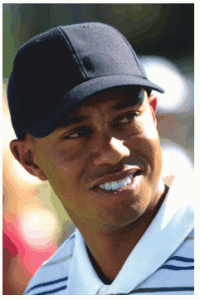 By Mark Harman USGTF Course Director Ridgeland, South Carolina
Brandel Chamblee said he couldn’t compete with today’s young guns. Greg Norman said he’d never return to his previous form. Woody Paige said he’d never win another tournament ever again. Jemele Hill said he should retire. Hank Haney said he had the chipping yips.
Pundits everywhere had a field day doubting Tiger Woods the past few years. And yet here we are again as Tiger has returned to the winner’s circle in a major championship, capturing his fifth green jacket this past April at Augusta National.
If nothing else, Tiger’s return to glory should remind all of us that prognosticating is often a worthless exercise, especially when it comes to what other people can and cannot do. How many times have we read stories about people who have suffered some serious injury and doctors telling them they would never again (pick one: walk, run, play golf, play tennis, go bowling…), only to see people defying what their own doctor, who’s supposed to be an expert, said. While Tiger’s tale isn’t as dramatic as perhaps someone being told they’d be in a wheelchair for the rest of their life only to run a marathon, it goes to show that the will of a strong-minded individual is often no match for what reality supposedly tells us. As Yogi Berra famously said, “It ain’t over ‘til it’s over.”
In the February 2017 edition of our monthly e-newsletter, I wrote the following of Tiger: “I think at minimum he will win two more majors before it’s all said and done, break Sam Snead’s Tour record of 82 victories, and become a top-ten player again…and I would not bet against him regaining the #1 spot at some time.” Unfortunately, in April of that year Tiger had spinal fusion surgery and made my own prediction look somewhat shaky. He even said himself later that year he was unsure if he would ever come back.
But even then, I always thought he would come back and be a major factor again. Part of my reasoning was that Tiger is, well, somewhat of a drama king. I read about other pro golfers having the same surgery and they came back to play well, so I figured Tiger could, too. And with our modern medicine and fitness knowledge, I thought Tiger would be given a way to fully function again.
Another factor in my belief that Tiger would become Tiger again is based on my own personal experience. In 2005 I won the United States Golf Teachers Cup for the fifth time at The Quarry in San Antonio, Texas, and in my victory speech, I said this might well be my last victory, as younger and better players were coming up through the ranks. Players like James Douris and Christopher Richards proved me right, as they captured multiple USGTF and WGTF titles the next few years. I was wrong on the younger part, though, as septuagenarian Bill Hardwick of Canada showed he was still capable of winning against the young bucks.
However, I didn’t really believe what I said in San Antonio; I was merely trying to give credit where credit was due. Surely, I thought, I would win again. But year after year went by, and my old anxiety issues resurfaced around 2010 at the U.S. Cup in Primm Valley, Nevada. They stayed with me for the next five Cups after that, and I often was no factor in our national championship event. I really did start to believe I was done.
And then in 2016 at Talking Stick in Scottsdale, Arizona, I teed off and my mind stayed surprisingly calm. I shot 71 the first round, and opened the second round with three straight birdies. When I learned I had a six-shot lead after 35 holes (I deliberately didn’t pay attention to what anyone else in my group was doing), I realized my own personal comeback was complete. Since then, I’ve been fortunate enough to win the U.S. Cup again, along with the World Cup and World Senior Cup. I say this not to brag, but to point out that we are capable of doing things we either used to be able to do or thought were impossible.
So it was with all this that I thought Tiger, if he stayed healthy, would return to being a dominant force in professional golf again. The final piece to the puzzle of my belief system was that Tiger has been doubted over and over throughout the years, and yet always found a way to prove the doubters wrong.
I realized that many people dislike Tiger for what he has done in his personal life, for his lack of decorum at times on the course, and for public acts like tipping servers poorly and being cold with the fans. I get that and cannot fault someone for not liking him for those reasons. But I also consider him an artist in the mold of Da Vinci and Michelangelo, and a generational athletic talent along with Babe Ruth, Muhammad Ali, Wayne Gretzky and Michael Jordan (and I’m sure Geoff Bryant would want me to add Tom Brady to the list, so I will).
We should all feel fortunate to witness such greatness and to awe at what’s possible in human achievement. I know I am.
By Mark Harman USGTF Course Director Ridgeland, South Carolina
Brandel Chamblee said he couldn’t compete with today’s young guns. Greg Norman said he’d never return to his previous form. Woody Paige said he’d never win another tournament ever again. Jemele Hill said he should retire. Hank Haney said he had the chipping yips.
Pundits everywhere had a field day doubting Tiger Woods the past few years. And yet here we are again as Tiger has returned to the winner’s circle in a major championship, capturing his fifth green jacket this past April at Augusta National.
If nothing else, Tiger’s return to glory should remind all of us that prognosticating is often a worthless exercise, especially when it comes to what other people can and cannot do. How many times have we read stories about people who have suffered some serious injury and doctors telling them they would never again (pick one: walk, run, play golf, play tennis, go bowling…), only to see people defying what their own doctor, who’s supposed to be an expert, said. While Tiger’s tale isn’t as dramatic as perhaps someone being told they’d be in a wheelchair for the rest of their life only to run a marathon, it goes to show that the will of a strong-minded individual is often no match for what reality supposedly tells us. As Yogi Berra famously said, “It ain’t over ‘til it’s over.”
In the February 2017 edition of our monthly e-newsletter, I wrote the following of Tiger: “I think at minimum he will win two more majors before it’s all said and done, break Sam Snead’s Tour record of 82 victories, and become a top-ten player again…and I would not bet against him regaining the #1 spot at some time.” Unfortunately, in April of that year Tiger had spinal fusion surgery and made my own prediction look somewhat shaky. He even said himself later that year he was unsure if he would ever come back.
But even then, I always thought he would come back and be a major factor again. Part of my reasoning was that Tiger is, well, somewhat of a drama king. I read about other pro golfers having the same surgery and they came back to play well, so I figured Tiger could, too. And with our modern medicine and fitness knowledge, I thought Tiger would be given a way to fully function again.
Another factor in my belief that Tiger would become Tiger again is based on my own personal experience. In 2005 I won the United States Golf Teachers Cup for the fifth time at The Quarry in San Antonio, Texas, and in my victory speech, I said this might well be my last victory, as younger and better players were coming up through the ranks. Players like James Douris and Christopher Richards proved me right, as they captured multiple USGTF and WGTF titles the next few years. I was wrong on the younger part, though, as septuagenarian Bill Hardwick of Canada showed he was still capable of winning against the young bucks.
However, I didn’t really believe what I said in San Antonio; I was merely trying to give credit where credit was due. Surely, I thought, I would win again. But year after year went by, and my old anxiety issues resurfaced around 2010 at the U.S. Cup in Primm Valley, Nevada. They stayed with me for the next five Cups after that, and I often was no factor in our national championship event. I really did start to believe I was done.
And then in 2016 at Talking Stick in Scottsdale, Arizona, I teed off and my mind stayed surprisingly calm. I shot 71 the first round, and opened the second round with three straight birdies. When I learned I had a six-shot lead after 35 holes (I deliberately didn’t pay attention to what anyone else in my group was doing), I realized my own personal comeback was complete. Since then, I’ve been fortunate enough to win the U.S. Cup again, along with the World Cup and World Senior Cup. I say this not to brag, but to point out that we are capable of doing things we either used to be able to do or thought were impossible.
So it was with all this that I thought Tiger, if he stayed healthy, would return to being a dominant force in professional golf again. The final piece to the puzzle of my belief system was that Tiger has been doubted over and over throughout the years, and yet always found a way to prove the doubters wrong.
I realized that many people dislike Tiger for what he has done in his personal life, for his lack of decorum at times on the course, and for public acts like tipping servers poorly and being cold with the fans. I get that and cannot fault someone for not liking him for those reasons. But I also consider him an artist in the mold of Da Vinci and Michelangelo, and a generational athletic talent along with Babe Ruth, Muhammad Ali, Wayne Gretzky and Michael Jordan (and I’m sure Geoff Bryant would want me to add Tom Brady to the list, so I will).
We should all feel fortunate to witness such greatness and to awe at what’s possible in human achievement. I know I am.
Windows
 You hear golf commentators and swing gurus mention it all the time: “He’s got the dreaded two-way miss going.” The two-way miss is a player’s tendency to miss shots both left and right with equal unpredictability.
You hear golf commentators and swing gurus mention it all the time: “He’s got the dreaded two-way miss going.” The two-way miss is a player’s tendency to miss shots both left and right with equal unpredictability.
Eliminating the two-way miss for a tour player means almost everything. Some will say, “I’ve taken the left side out of play so I didn’t have to worry about the water over there.” You might consider that eliminating the two-way miss is something that only a good or even a tour player can do, but in fact, it is also something that an average player is capable of.
A lot of amateurs are under the impression that if they didn’t hit a ball close to where they were aiming, the shot was automatically a poor one. To a certain extent, they may be right. And too many teachers may fall into the same trap of believing that a shot that did not end up close to where the student was aiming was a poor shot. One of the reasons for this is that any less-than-perfect contact is easily felt by anyone who is a bogey shooter or better. But was the shot really that poor?
Instead of striving for no misses – which is impossible, of course – or even fewer misses, it might be better to strive for the “one-way miss.” With a one-way miss, it is easy to plot course strategy and tactics.
Take our hypothetical tour player who doesn’t have to worry about water to the left of the fairway. Maybe he has honed a reliable fade so that the ball never goes left of its starting line. Or maybe he has a draw but knows how far left it will go in the worst-case scenario.
Jack Nicklaus was a wonderful example of the latter. He played a fade, and using the example of a fairway that is 40 yards wide, he said (paraphrasing), “When you play a fade or draw, you can aim down the edge of the fairway and have 40 yards to work with. When you play a straight ball and aim down the middle of the fairway, if it goes left or right you only have 20 yards to work with.”
Nicklaus makes a great point, and one that is often ignored by amateurs. A lot of slicers always seem to aim down the middle of the fairway, and how many times have we seen a right-handed slicer wind up in the right rough? Plenty. And yet, if they were to aim down the left side of the fairway, they can watch their ball curve back into the fairway most of the time. When you ask a slicer why they just don’t aim down the left side, some of them will actually say that the point is to hit a straight shot, and allowing for the slice is mentally allowing for failure!
This brings up the concept of knowing where your ball is going to wind up, not only if you hit a good shot but also a bad one. It’s called a “window,” and is really possible only if a one-way miss is happening. Slicers actually have a great advantage if they only would swallow their ego and allow for their natural curve to work to their advantage. For example, on an approach shot with the pin on the right side of the green, a slicer has a green light to curve the ball into the pin. But as with tee shots, too many of them might aim at the pin, hoping against hope that this time the ball will fly straight. Of course, more often than not it will wind up right of the green, short-sided, and now they face a difficult up-and-down.
What about our better students who can and do hit a straight ball most of the time? For them, it is imperative to know which way their predominant miss tendency is and plan accordingly. Many tour layers have a ball flight that is incredibly straight on a solid shot, but they also know which way the ball will go if they do not hit a perfect shot. Suppose one of our students, a good player who hits it relatively straight, faces a long approach shot with the pin on the left side of the green. His “window” should be from the pin to the right edge of the green. Let’s say he knows his miss tendency is to the left. In this case, it would be foolish to aim at the pin. The better play would be to aim between the pin and the right edge of the green. Conversely, if his tendency is to miss to the right, he can go ahead and aim at the flag stick with the confidence that the ball will not wind up left of the green.
All execution errors cannot be avoided, of course, but developing a reliable shot that rarely misses both ways is critical for players to play their best golf. At some point, players and teachers may need to abandon the quest to hit straight shots and realize that a reliable fade and draw, and sometimes even reliable slices and hooks, can be very playable.
The New Major Championship Schedule
Justin Rose and Rory McIlroy recently complained that there was not enough time between the major championships to adequately prepare. They were also critical that the season that used to carry into August was now over in July. I guess they forgot about the $15 million that players were chasing in the playoffs that concluded on August 25th. Rory could not understand how football could cause such a dramatic change in scheduling. Quite understandable, since Europeans have no idea how passionate we colonists are about the most popular sport in America. The NFL and NCAA take no back seat once the training camps and practice sessions begin.
Is the time between major championships really an issue? I think that depends on whether you consider the Players a major tournament. Many do, but yes or no, it is one of five huge tournaments each year. The only difference in 2018 versus 2019 was when the Players was conducted. In 2018 it was 31 days after the Masters. In 2019 it was 30 days before the Masters. In reality, the length of time between the “Big 5” this year was more consistent than in 2018, about 29 days. In the previous year, the PGA was held only 17 days after the Open Championship. So, in my opinion, the new schedule is just right. Golfers will adjust; they always do.

